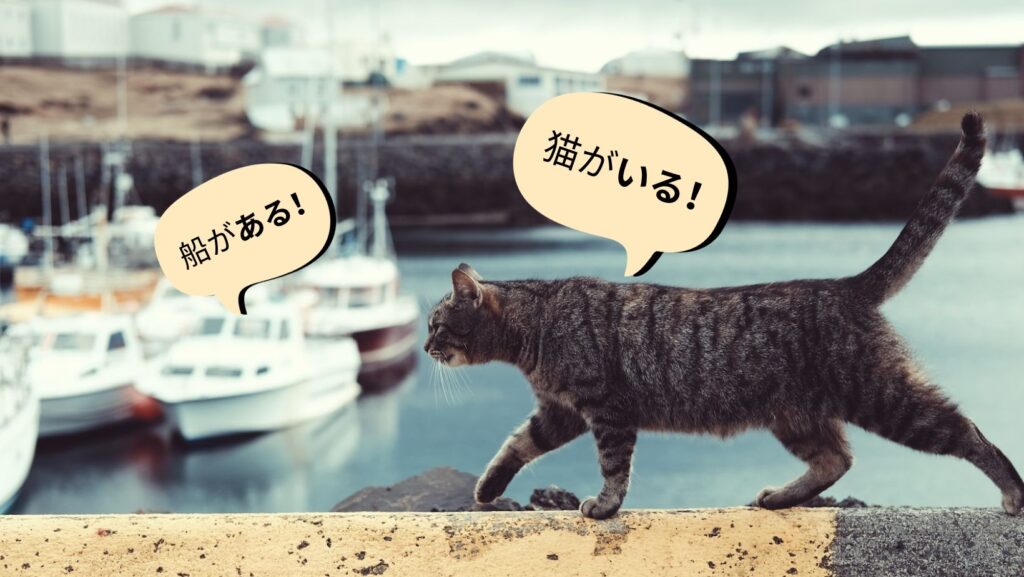Aru vs. Iru in Japanese
Many Japanese learners confuse the verbs “aru” (ある) and “iru” (いる) which means “to be” or “to exist”. This is because they must be used differently depending on whether or not the object is alive or not. In English, there is no need to be concious of this!

In this article, let’s explore the differences between “aru” and “iru” and provide examples to clarify their usage so you can use them confidently!
Aru (ある) – Inanimate Objects and Abstract Concepts
“Aru” is typically used to refer to the existence or presence of inanimate objects and abstract concepts. It is used when discussing things that are not animate or living beings.
Inanimate Objects: “Aru” is used to describe the existence of non-living entities, such as books, cars, buildings, or natural objects like mountains and rivers.
- 本がある (Hon ga aru) – There is a book.
- 山がある (Yama ga aru) – There is a mountain.
Abstract Concepts: “Aru” can also be used to indicate the existence of abstract concepts or states.
- 問題がある (Mondai ga aru) – There is a problem.
- 歴史がある (rekishi ga aru) – There is history.
Negative Form: To express the absence or non-existence of something, you can use the negative form “nai.”
- 本がない (Hon ga nai) – There is no book.
- 問題がない (Mondai ga nai) – There is no problem.
Iru (いる) – Living Beings
“Iru” signifies the existence or presence of living beings, including people and animals.
Living Objects: Use “Iru” when discussing the presence of humans or animals. Note that it can also show possession. You would use “Inu ga iru” to say that “I have a dog”.
- 犬がいる (Inu ga iru) – There is a dog. (I have a dog)
- たぬきがいる (Tanuki ga iru) – There is a tanuki.
Specific Individuals: “Iru” refers to specific individuals or known entities. It can also indicate “Have” as you can see in the example of “I have a sister”.
- 姉がいる (Ane ga iru) – I have a sister.
- 先生がいる (Sensei ga iru) – There is a teacher.
- 田中さんがいる (Tanaka san ga iru) – Mr. Tanaka is there.
Negative Form: To indicate the absence or non-existence of living beings, you can use the negative form “inai.”
- 猫がいない (Neko ga inai) – There is no cat.
- 人がいない (Hito ga inai) – There are no people.
Here are the key points for “Aru” vs. “Iru”!
- In Japanese, understanding the difference between “aru” and “iru” is crucial for clear communication. “Aru” is for inanimate objects and abstract concepts, while “iru” is exclusively for living beings, including people and animals.
- To express negation, “aru” becomes “nai” for inanimate objects and abstract concepts, and “iru” becomes “inai” for living beings.
- Both of them can indicate possession or “have” in some cases. So, watch out for those!
By mastering the usage of these verbs, you’ll be able to use the Japanese language and navigate its culture with confidence. Knowing how to use these verbs will up your Japanese game.
Let me know if you have any questions and be sure to check out other Japanese learning articles like “How Are You?” in Japanese or Japanese Animal Sounds
~ Tanuki





